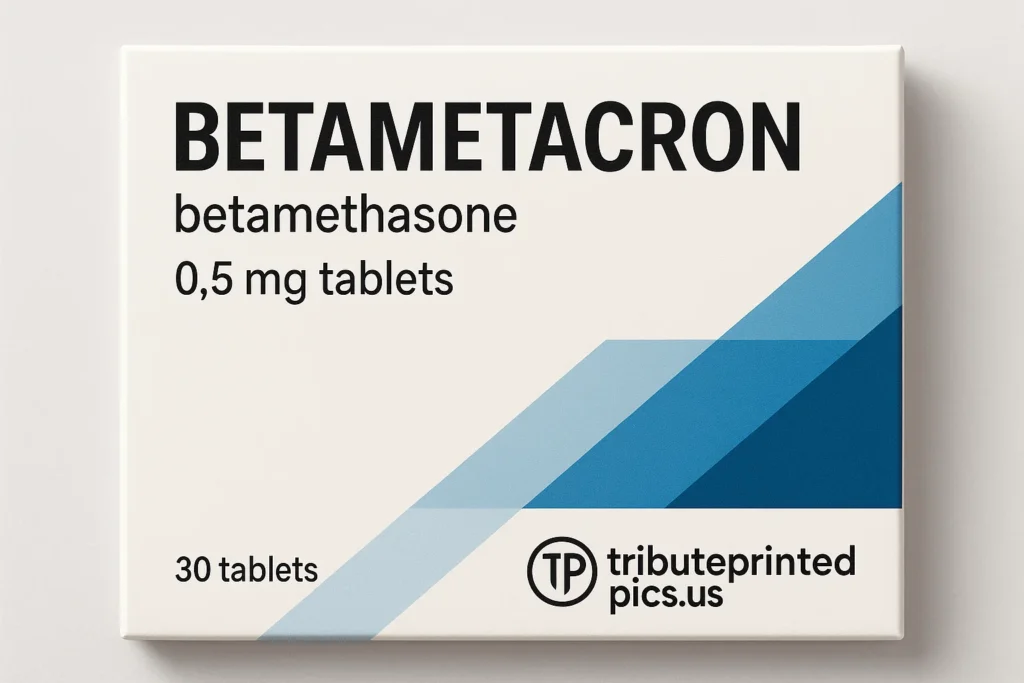Introduction to Betametacron
Betametacron is a versatile and widely used corticosteroid. Its main function is to work as an anti-inflammatory medicine. It belongs to a class called glucocorticoid receptor agonists, which help regulate the immune response and reduce inflammation in both humans and plants. Betametacron is trusted for its effectiveness in treating a variety of health conditions as well as its role in agricultural applications for crop protection.
Its unique ability to be used in both topical application and systemic use makes it highly adaptable. This means it can treat localized problems like eczema or psoriasis and systemic conditions like asthma and COPD. In agriculture, it serves as a selective herbicide, protecting valuable crops such as sugar beet, maize, potatoes, and soybeans.
Betametacron’s popularity comes from its dual role, offering benefits to medicine and farming alike. Understanding how it works in both fields provides insight into why it is widely valued by doctors and farmers around the world.
Medical Uses of Betametacron
Betametacron plays a critical role in inflammation treatment. Doctors commonly prescribe it for skin disorders like eczema and psoriasis. It helps reduce redness, swelling, itching, and discomfort caused by immune system overactivity. By influencing the immune response, Betametacron helps restore skin health and improve patient quality of life.
In respiratory medicine, it is used to manage chronic inflammation associated with asthma and COPD. These conditions often involve an overactive immune response, which Betametacron helps regulate. When used in systemic form, it works throughout the body to control inflammation and ease breathing.
Key points in medical uses:
- Treats eczema, psoriasis, and dermatitis.
- Helps control asthma and COPD symptoms.
- Reduces swelling and redness in chronic inflammatory conditions.
- Plays a role in corticosteroid therapy for immune system modulation.
This dual role in both dermatology and respiratory care shows the broad scope of Betametacron’s applications.
Corticosteroid and Glucocorticoid Action
Betametacron belongs to the corticosteroid family of drugs. Corticosteroids work by mimicking hormones produced by the adrenal glands. These hormones regulate the body’s immune system and inflammation. Betametacron acts as a glucocorticoid receptor agonist. It binds to specific receptors in cells to control inflammation pathways.
By reducing inflammation and modulating immune activity, Betametacron relieves symptoms in skin disorders and respiratory diseases. Its dual action makes it ideal for both topical application and systemic use.
Corticosteroid therapy with Betametacron provides significant relief for patients with chronic inflammation. However, it is important to follow proper dosage and safety measures to avoid potential side effects.
Dosage and Administration Guidelines
The dosage of Betametacron varies depending on the condition being treated. For skin disorders, it is usually applied topically as creams or ointments. The amount used depends on the severity of the condition and the size of the affected area. For respiratory diseases, Betametacron may be prescribed systemically, often in the form of tablets or injections.
Dosage considerations:
- Follow doctor’s prescription strictly.
- Avoid overuse to prevent side effects.
- For topical applications, apply a thin layer to affected skin.
- Systemic use requires careful medical supervision.
For agricultural use, dosage is determined according to herbicide application guidelines to protect crops. Incorrect use may lead to issues like chlorosis (yellowing of leaves) and reduced crop yield. Farmers must follow instructions to ensure crop safety and achieve effective weed management.
Side Effects and Safety Considerations
Betametacron is effective, but it can cause side effects if not used properly. Common side effects for topical use include skin irritation, dryness, and thinning. Long-term or systemic use can lead to hormone imbalance, immune suppression, and other health risks.
Important safety tips:
- Use as prescribed by a healthcare provider.
- Monitor for signs of irritation or allergic reaction.
- Avoid prolonged use unless medically advised.
- For agricultural application, follow safety guidelines to prevent harm to crops.
In agriculture, safety is equally important. Incorrect use of Betametacron as a herbicide can affect crop safety and lead to problems such as early weed growth stages being uncontrolled or damage to non-target plants. Proper adherence to application guidelines ensures both effectiveness and sustainability.
Betametacron in Skin Disorders
Topical Betametacron is widely used for treating eczema and psoriasis. These conditions involve inflammation and immune system overactivity. Betametacron reduces symptoms by calming inflammation and improving skin health.
Steps for topical use:
- Clean and dry the affected area before application.
- Apply a thin layer once or twice daily.
- Avoid covering with bandages unless advised.
- Do not use on broken skin without medical advice.
This targeted treatment makes Betametacron an essential part of corticosteroid therapy for skin disorders. It not only provides symptom relief but also prevents flare-ups and improves long-term skin condition.
Respiratory Uses – Asthma and COPD
In respiratory care, Betametacron is used for asthma and COPD. These conditions involve persistent inflammation of the airways. Betametacron works systemically to reduce inflammation, making breathing easier and reducing flare-ups.
Benefits of Betametacron in respiratory treatment:
- Controls chronic inflammation.
- Reduces frequency of asthma attacks.
- Improves lung function in COPD patients.
- Enhances quality of life.
Doctors often combine Betametacron with other treatments for best results. Corticosteroid therapy for respiratory conditions requires careful monitoring to balance benefits and side effects.
Betametacron in Agriculture
Betametacron is also a selective herbicide widely used in agriculture. It belongs to the phenylcarbamate and urea-derived herbicide classes. It targets broadleaf weeds while protecting crops.
Crops protected using Betametacron include:
- Sugar beet
- Maize
- Potatoes
- Soybeans
Table: Betametacron in Agriculture
| Crop Type | Purpose | Benefits |
|---|---|---|
| Sugar beet | Broadleaf weed control | Improved yield, crop safety |
| Maize | Early weed growth control | Better growth, weed-free crop |
| Potatoes | Weed management | Reduced competition |
| Soybeans | Integrated weed management | Sustainable crop protection |
Farmers value Betametacron for its ability to manage weeds without damaging the crops. This improves productivity and ensures sustainable farming practices.
Weed Management and Crop Safety
Using Betametacron in farming requires knowledge of integrated weed management. It is effective in controlling weeds during early weed growth stages. Farmers must follow herbicide application guidelines to ensure crop safety and prevent resistance.
Weed management benefits:
- Protects crop yields.
- Reduces competition for nutrients.
- Improves overall crop health.
- Supports sustainable agriculture.
Betametacron works through photosystem II disruption, affecting weed growth while leaving crops unharmed. This precision makes it an important part of modern farming strategies.
Understanding Chronic Inflammation
Chronic inflammation occurs when the immune system remains active longer than necessary. Betametacron helps control this by modulating the immune system and reducing inflammation. This is especially beneficial for patients with persistent skin disorders, asthma, or COPD.
Corticosteroid therapy with Betametacron helps:
- Control inflammation effectively.
- Prevent tissue damage.
- Improve comfort and health.
- Support long-term wellness.
Safety in Long-Term Use
Long-term use of Betametacron should be carefully monitored. Prolonged corticosteroid therapy can lead to:
- Hormonal imbalance.
- Adrenal suppression.
- Immune suppression.
- Skin thinning and bruising.
Regular check-ups are essential to ensure safety. In agriculture, long-term use must respect crop safety rules to avoid environmental harm and maintain soil health.
Future of Betametacron
Betametacron will likely continue to play an important role in both medicine and agriculture. Advances in drug delivery could make its use safer and more effective. In agriculture, integrated weed management systems will evolve, making Betametacron even more valuable for crop protection.
The future may include:
- Improved topical delivery systems.
- Reduced side effects.
- Better herbicide efficiency.
- More sustainable farming practices.
Conclusion
Betametacron is a powerful corticosteroid with dual uses in medicine and agriculture. It is effective for inflammation treatment, skin disorders, asthma, COPD, and weed control. Proper dosage, adherence to safety guidelines, and careful monitoring ensure its benefits outweigh risks.
Its role in improving lives and supporting sustainable farming makes Betametacron a unique and valuable tool. Whether for patients or farmers, Betametacron represents a blend of science and practicality that stands the test of time.
FAQs About Betametacron
- What is Betametacron used for?
Betametacron treats inflammation, skin disorders, asthma, COPD, and controls weeds in agriculture. - How is Betametacron applied?
Topically for skin disorders, systemically for respiratory diseases, and as a herbicide for crops. - What are the side effects of Betametacron?
Skin irritation, dryness, hormonal imbalance, and immune suppression are possible side effects. - Is Betametacron safe for long-term use?
Yes, with medical supervision and proper dosage, but long-term use requires monitoring. - How does Betametacron work in agriculture?
It controls broadleaf weeds, protects crops, and supports integrated weed management.


